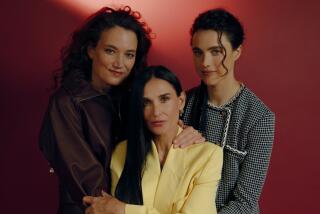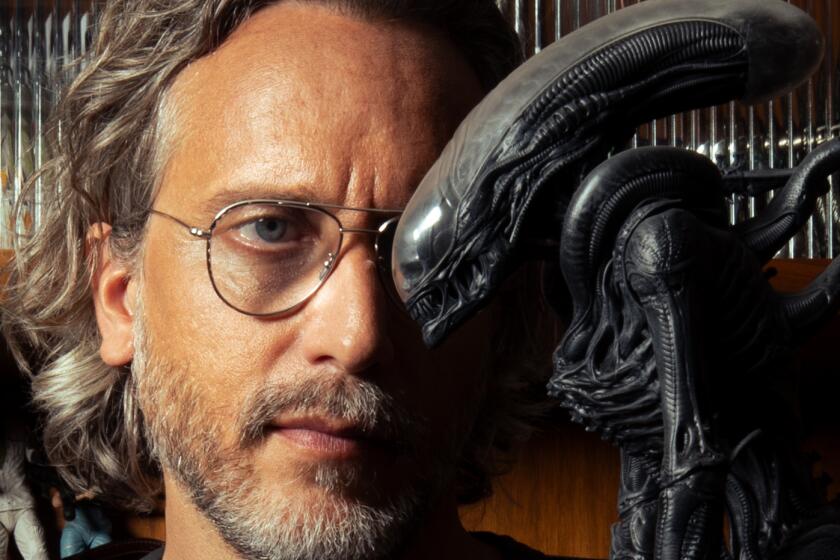The brothers grim
The works of Belgian filmmakers Luc and Jean-Pierre Dardenne follow the hardscrabble struggles of lower-class life so relentlessly that they might seem like textbook examples of arduously difficult, obtusely unfun European art cinema. Yet their films are made with such restless energy, hurtling headlong and recklessly through their exactingly portrayed worlds, that they often feel more like crackerjack thrillers.
So which is it?
“Both,” said Jean-Pierre Dardenne through a translator, on the phone during a recent stop in New York. “When we start to work on a film, we don’t really ask ourselves these questions. It’s true that our films, this one in particular, can be seen as a thriller. We don’t think in terms of whether we’re doing an art-house film or a thriller when we start to work. So, it’s a little bit of both.”
Their latest film, “Lorna’s Silence,” opens in Los Angeles and New York on Friday. Set in the larger city of Liege rather than their usual hometown of Seraing, it follows Albanian emigre Lorna (Arta Dobroshi), who has gotten in over her head in an immigration scheme. She has married the helplessly addicted junkie Claudy (Dardenne regular Jeremie Renier) to gain citizenship for herself. But Claudy will soon be murdered by Lorna’s handlers so she can, in turn, marry a Russian mobster. As the plan to kill Claudy moves along, she begins to have a change of heart, edging toward some kind of spiritual awakening.
The Dardennes (Jean-Pierre is 58, Luc is 55) made documentaries for more than two decades before making their feature debut in 1996 with “The Promise.” Two of their subsequent films, “Rosetta” (1999) and “L’enfant” (2005), won the top prize at the Cannes International Film Festival, putting them into a select club of filmmakers, including Francis Ford Coppola and Emir Kusturica, who have taken home the Palm d’Or twice. Their shooting style, intimately close on their characters, has become an imitated technique that had an acknowledged influence on such films as the Sundance hit “Ballast” and Darren Aronofsky’s “The Wrestler.”
For “Lorna’s Silence,” they purposefully changed things up a bit, shooting on 35-millimeter rather than their usual Super 16, using a tripod and even a little music, adding new dimensions to their signature style.
“We really wanted to observe Lorna,” explained Jean-Pierre Dardenne, “to watch her as a mysterious woman. We wanted to be further away from her, we wanted to have a heavier camera, more inertia, less speed, to be less nervous in a way. We wanted to allow the spectator to have the time to ask who this woman is.”
In the same way, their films feature frequent shots of characters walking, or, as in “Lorna’s Silence,” waiting in line. These moments are precisely the kind of thing cut out of most other films.
“There’s a lot of repetition to these movements, the walking, the waiting,” said Luc Dardenne, “and I think those repetitions allow us to move into the consciousness of the character. It allows us into her rhythm, gives the viewer the possibility to create their own hypothesis of what she might be thinking.”
They’ve had tremendous success at Cannes, with four of their five films competing there, and all four entries winning a prize. (“Lorna” was recognized for best screenplay.) To what do they attribute this accomplishment at such a prestigious festival?
“We pay the jury,” deadpanned Luc.
--
Aussie film redux
Subtitled “The Wild, Untold Story of Ozploitation!,” the documentary “Not Quite Hollywood” takes an endearing look at genre filmmaking in Australia in the 1970s and ‘80s, creating an alternative to the accepted history of early Australian filmmaking being along the lines of the austere 1975 film “Picnic at Hanging Rock.” Featuring out-of-control action pictures, bawdy sex comedies and terrifying horror films, “Not Quite Hollywood” is a celebration of genre films and of the pure joys of moviegoing.
“It doesn’t pretend these films are all works of genius,” said director Mark Hartley.
Though many of the films feature actors one may never see again, there is a healthy mix of familiar faces, including Mel Gibson in “Mad Max,” Nicole Kidman’s debut in “BMX Bandits,” Jamie Lee Curtis in “Roadgames” and Dennis Hopper in “Mad Dog Morgan.”
“They are all noble efforts,” said Brian Trenchard-Smith, director of such titles as “The Man From Hong Kong,” “Turkey Shoot,” “Stunt Rock” and “Dead End Drive-In.”
--
More to Read
Only good movies
Get the Indie Focus newsletter, Mark Olsen's weekly guide to the world of cinema.
You may occasionally receive promotional content from the Los Angeles Times.











